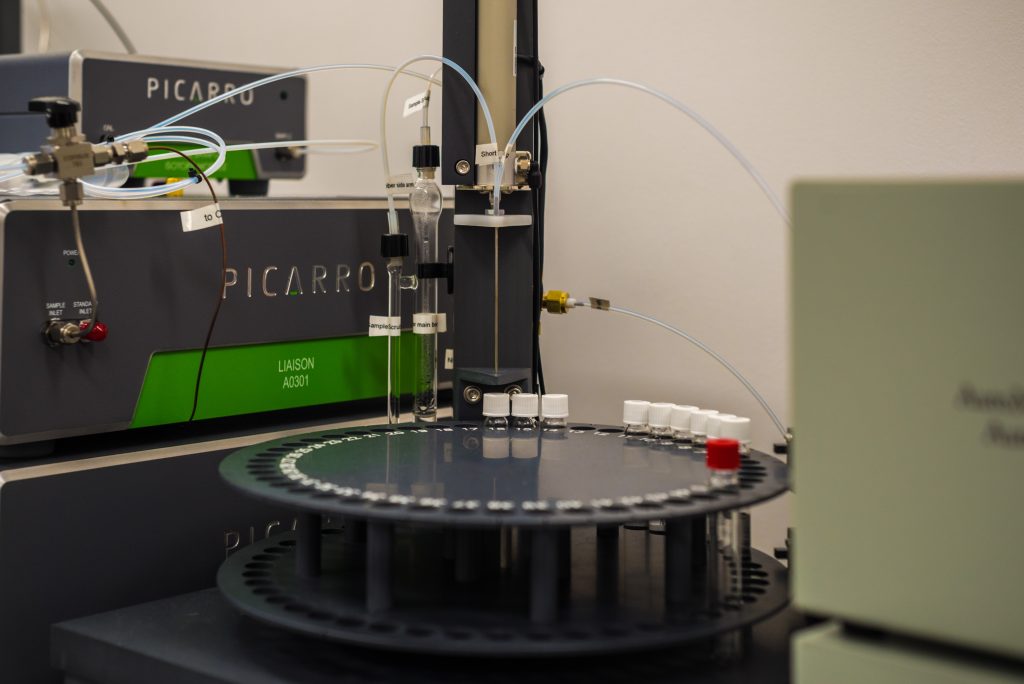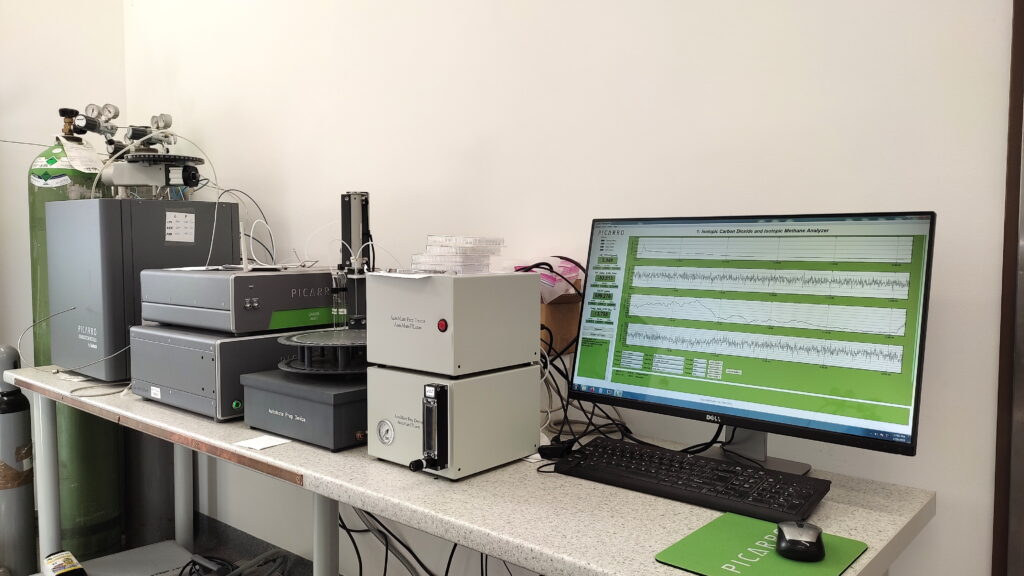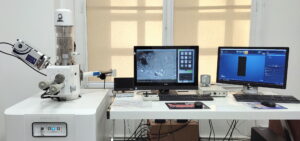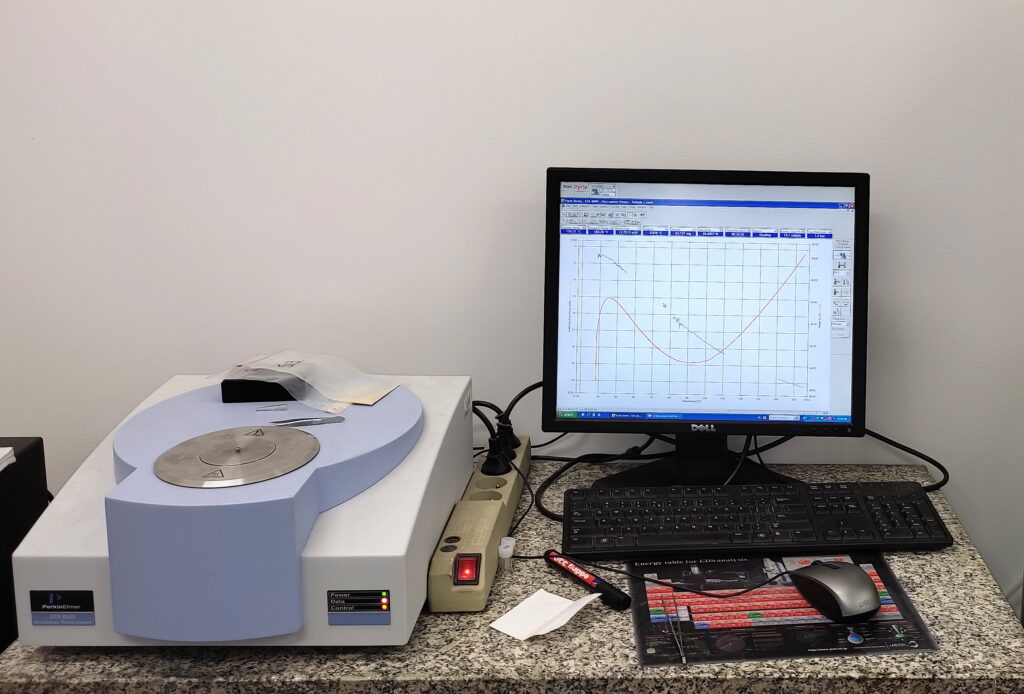
Laboratory of the Department of Experimental Petrology
Laboratory Head: Prof. Jacek Puziewicz
Contact:
wojciech.bartz/at/uwr.edu.pl, tel. 713759205
maciej.gorka/at/uwr.edu.pl, tel. 713759567
Institute of Geological Sciences of the University of Wrocław,
Department of Experimental Petrology,
ul. Cybulskiego 32 (1st floor)
JEOL JSM-IT100 In-Touch-Scope™ Scanning Electron Microscope
The JEOL JSM-IT100 In-Touch-Scope™ Scanning Electron Microscope allows for the precise characterization of the appearance and composition of all types of inorganic geological and industrial materials (minerals, rocks, ores, metallurgical products and waste, ceramics, binding materials, heritage materials, atmospheric dust, etc.). The device is used for various mineralogical and petrographic studies where it’s essential to combine information about the appearance and/or morphology of the sample with point chemical analyses in the micro-area.
-operation in high vacuum (HV),
-operation in low vacuum (LV) (pressure 10 Pa to 100 Pa),
-secondary electron (SED detector) and backscattered electron (BED detector; imaging modes: composition/topography/shading),
-magnifications from ~50x to ~50,000x,
-Oxford EDX detector with Aztec software allows for qualitative and quantitative chemical analysis (both in point and elemental mapping of an area up to a dozen cm2, i.e. the size of a standard microscopic petrographic slide),
-accelerating voltage adjustable between 0.5 kV and 20 kV,
-maximum resolution in HV mode and 20 kV voltage is 4 nm,
-CL detector (Centaurus, Deben) allows for imaging in cathodoluminescence mode, in grayscale, both in low and high vacuum.
Person in charge: Dr. Wojciech Bartz
Simultaneous Thermal Analyzer STA 6000 (Perkin Elmer)
The STA 6000 (Perkin Elmer) Simultaneous Thermal Analyzer enables thermogravimetric studies (DSC-TG) of various thermally active materials. It is a compact STA analyzer, allowing for simultaneous analysis using two measurement techniques, namely thermogravimetric analysis (TG – [mg]) and differential scanning calorimetry (DSC – [mW]), controlled from an external computer, with PYRIS software for data processing.
CRDS Picarro G2201i Spectrometer with CM and AutomateFX Attachments
The CRDS Picarro G2201i Spectrometer with CM/AutomateFX attachments allows for analyses of concentrations and isotopic composition of carbon from atmospheric CO2 and CH4, isotopic composition of carbon from organic matter of any origin (contemporary organic matter, fossil fuels, atmospheric dust, etc.), isotopic composition of carbon from carbonates and DIC (dissolved inorganic carbon) in water. Additionally, it is possible to analyze the isotopic composition of carbon from CO2 and CH4 from gas mixtures with concentrations higher than atmospheric (landfill gases, incubation gases, mine gases, etc.).

The results of solid and liquid samples are normalized to V-PDB using international IAEA/USGS standards as well as internal laboratory standards based on a minimum 3-point calibration curve prepared for each measurement series. Gas samples are normalized to V-PDB using calibrated internal gas standards.
Person in charge: Dr. hab. Prof. UWr Maciej Górka
Analysis of solid samples:
1) organic (plant and animal, sediments, suspensions, soil, etc.) using the CM attachment – minimum carbon content in the sample required for a single analysis is 250-400µg C (with standard organic samples containing about 50% C, it is 1mg of sample) – analysis accuracy below 0.2‰
2) inorganic (carbonates) using the CM attachment – minimum carbon content in the sample required for a single analysis is 250-400 µg C (approx. 2.5mg of pure CaCO3) – analysis accuracy below 0.2‰
Analysis of liquid samples:
1) inorganic (DIC – dissolved inorganic carbon) from water using the AutomateFX attachment – minimum carbon content in the sample required for a single analysis is 250-400 µg C (5ml of water containing dissolved inorganic carbon forms HCO3-/CO32-) – analysis accuracy 0.2‰
Analysis of gas samples:
1) atmospheric air, air from special experimental chambers, etc.) – possibility of analyzing CO2 and CH4 concentrations and isotopic composition 13C from both CO2 and CH4. Samples are typically taken using aspiration with a 5l/min flow pump and 1l Tedlar bags. Sample measurement range:
- for low concentrations: 1.8ppm-12ppm of methane and 380-2000ppm of carbon dioxide
- for high concentrations: 10ppm-1000ppm of methane and 380-2000ppm of carbon dioxide


